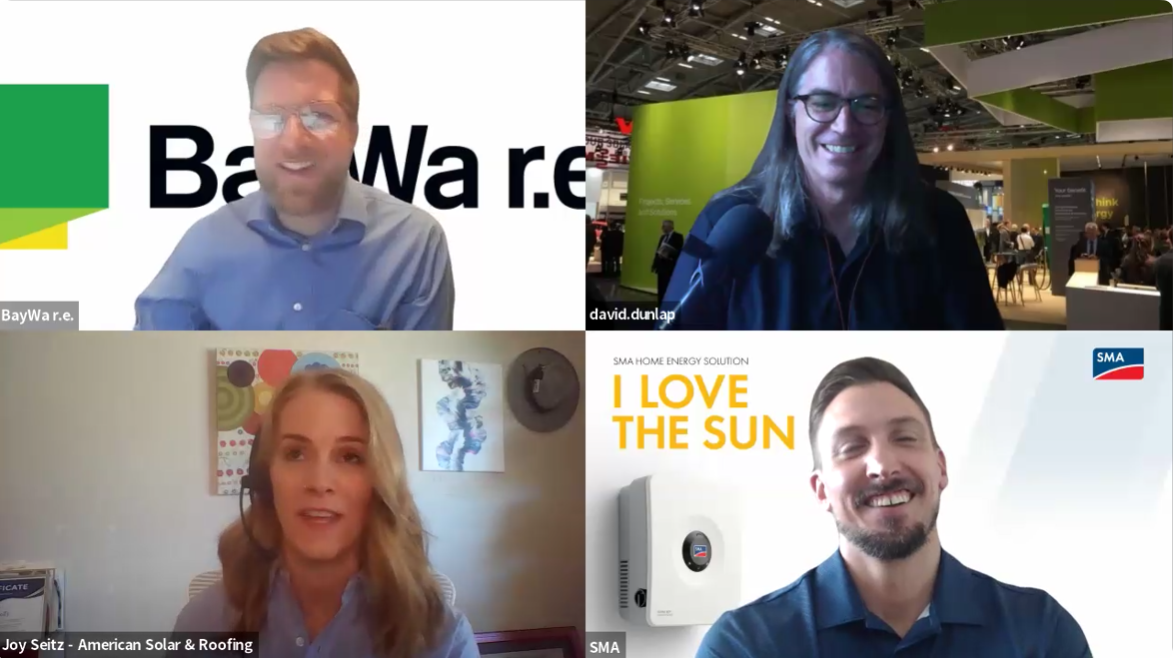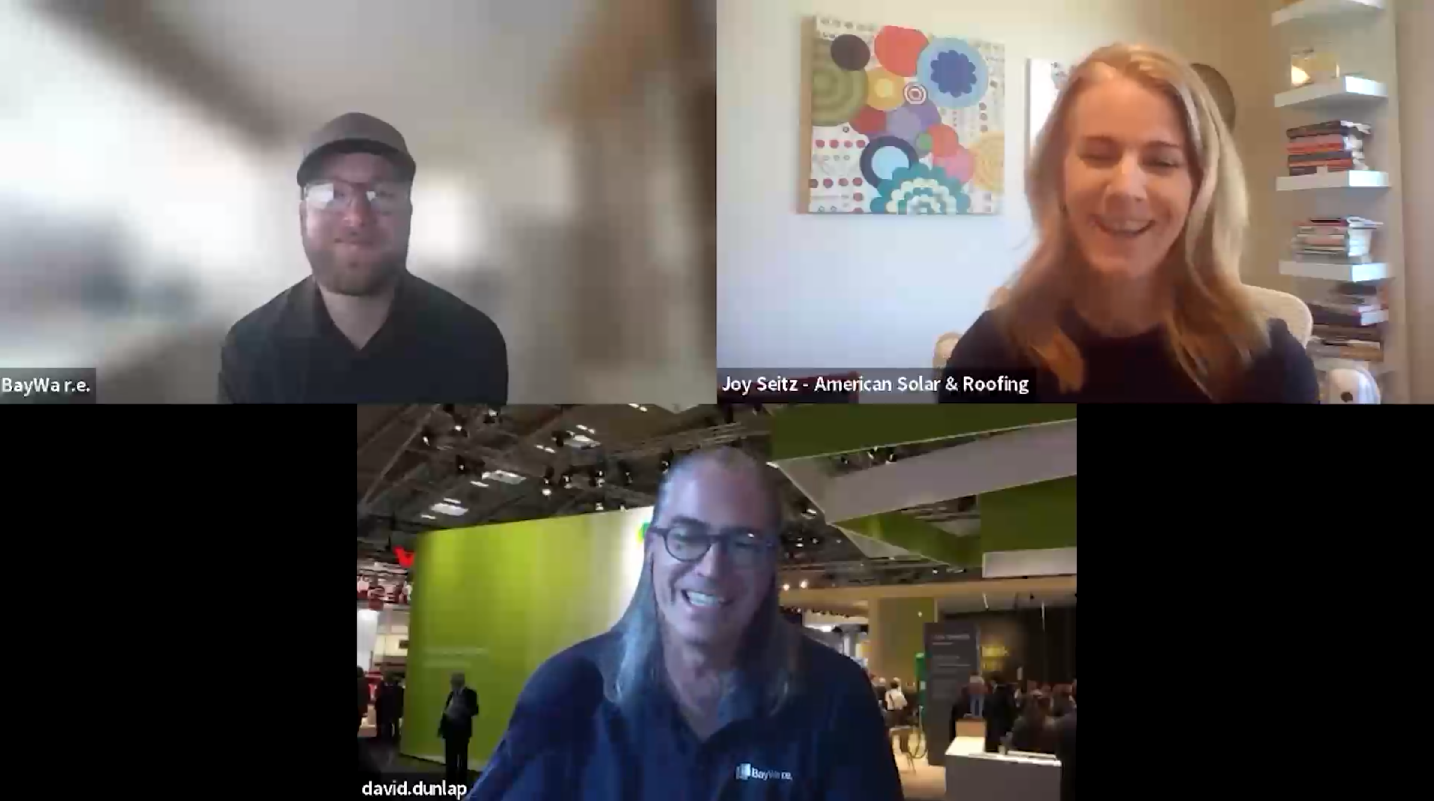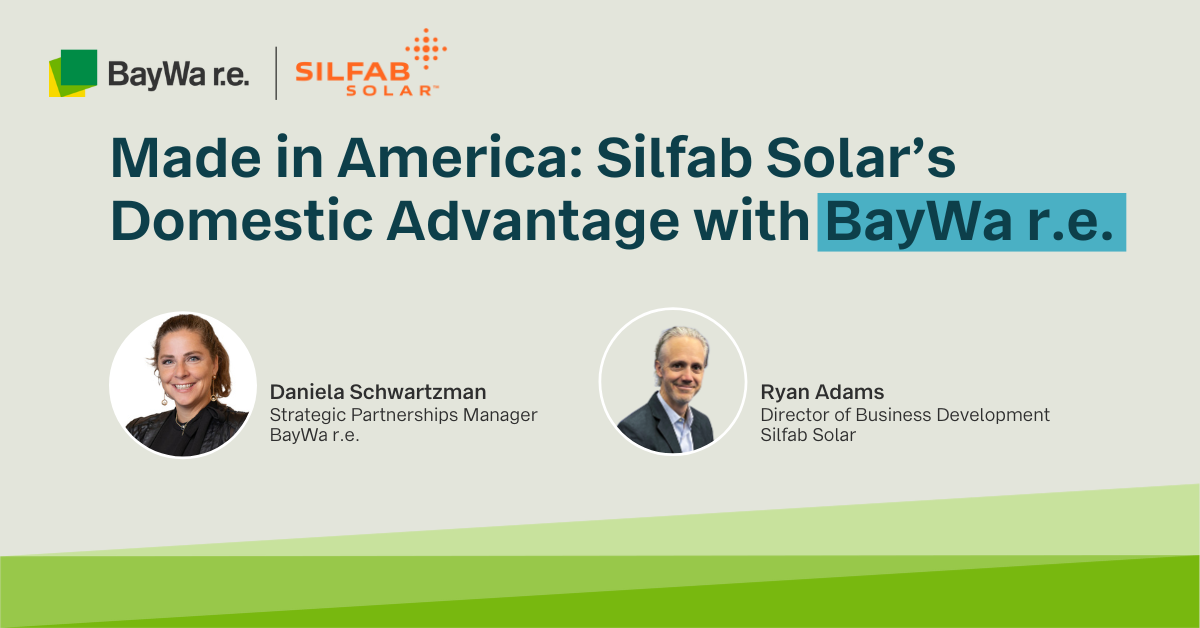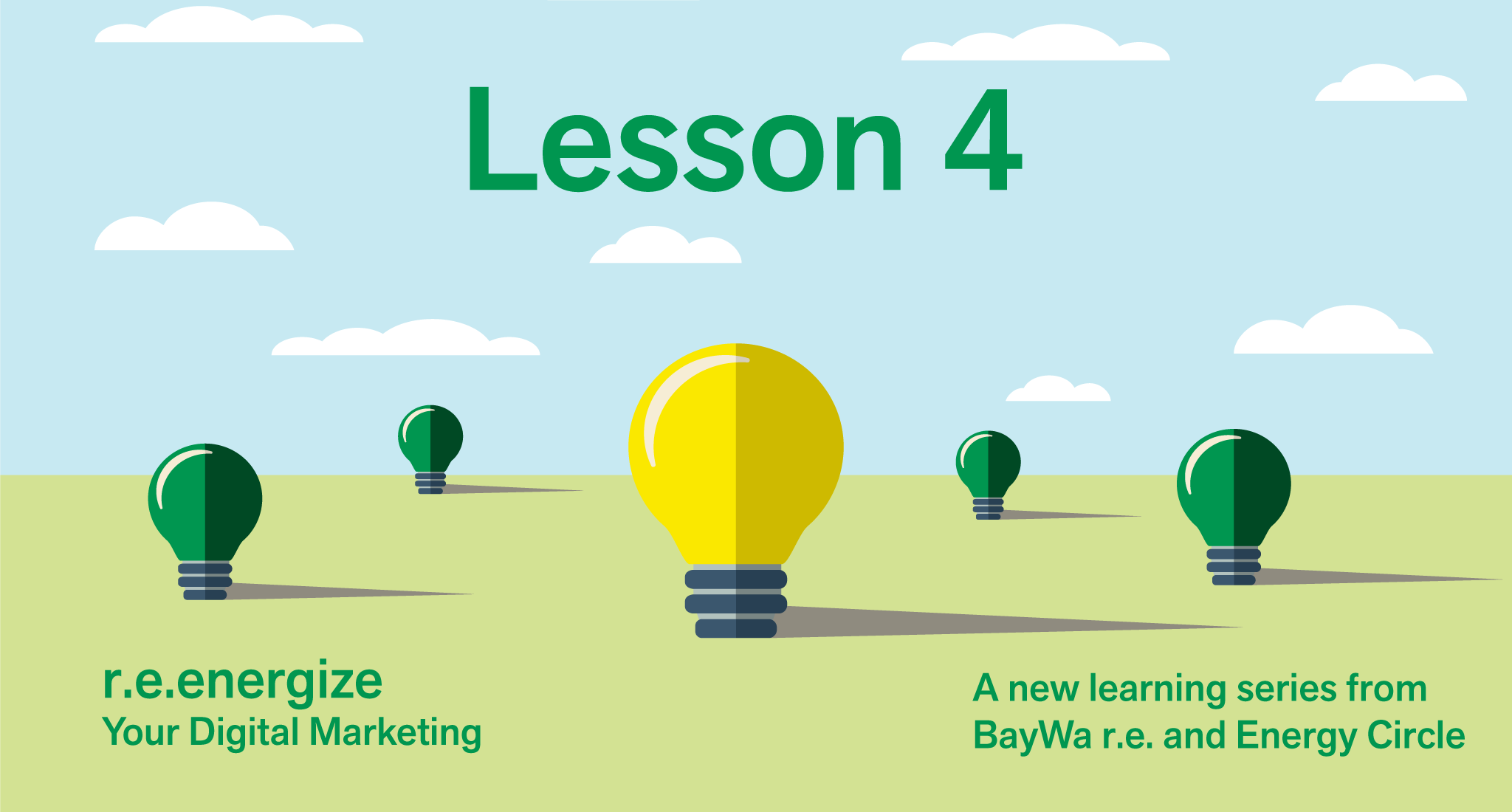
Note: This article is part of the educational series: r.e.energize Your Digital Marketing. To view all the lessons in the series, click here.
Introduction
In Lesson 2 of our r.e.energize Your Digital Market series, we discussed how Success = Sales. In Lesson 4, we discuss how to actually win sales through your website.
The first key step to winning sales is getting traffic to your website. We’ll start by addressing three key aspects of traffic:
- Determining what is a sufficient amount of traffic for your businesses.
- Identifying how much traffic you need from specific sources. (Each traffic source has a different conversion rate—i.e. how many leads you need to engage with to make one sale.) We’ll help you figure it all out.
- Honing in on where to focus your efforts—which traffic source(s) and why.
Which type of traffic do you need?
There are two important aspects to remember about website traffic:
- There are different traffic types
- Traffic types have different conversion rates
With digital marketing, there are six basic types of traffic, defined as follows:
- Organic: Organic traffic means someone performed search engine search and discovered your website on the search engine result page (SERP – see below illustration). Note: this person did NOT click on a paid ad.
- Paid Search: Paid search is very similar to organic search. The difference is that someone discovered your website by clicking on a paid ad that you created.
- Direct: Direct traffic is any traffic where the referrer or source is “unknown.” Often this means they came from a bookmark or typed your business’s URL directly into their browser.
- Other: Traffic without a source bucket or traffic marked as “other” by a URL parameter, will remain marked as “other.”
- Referral: Referral traffic means your website was referred by a website that was NOT a search engine or a social network. Typically, this means the traffic came from another website, blog, or news website.
- Social: Social traffic is traffic from a social network: Facebook, Twitter, Instagram, Linkedin, etc.
- Email: Email traffic is from an email campaign that has been properly tagged with the “email” parameter.
Now that we understand the different traffic types, we can start to figure out what type of traffic to focus on. And we do that by examining a traffic’s conversion rate.

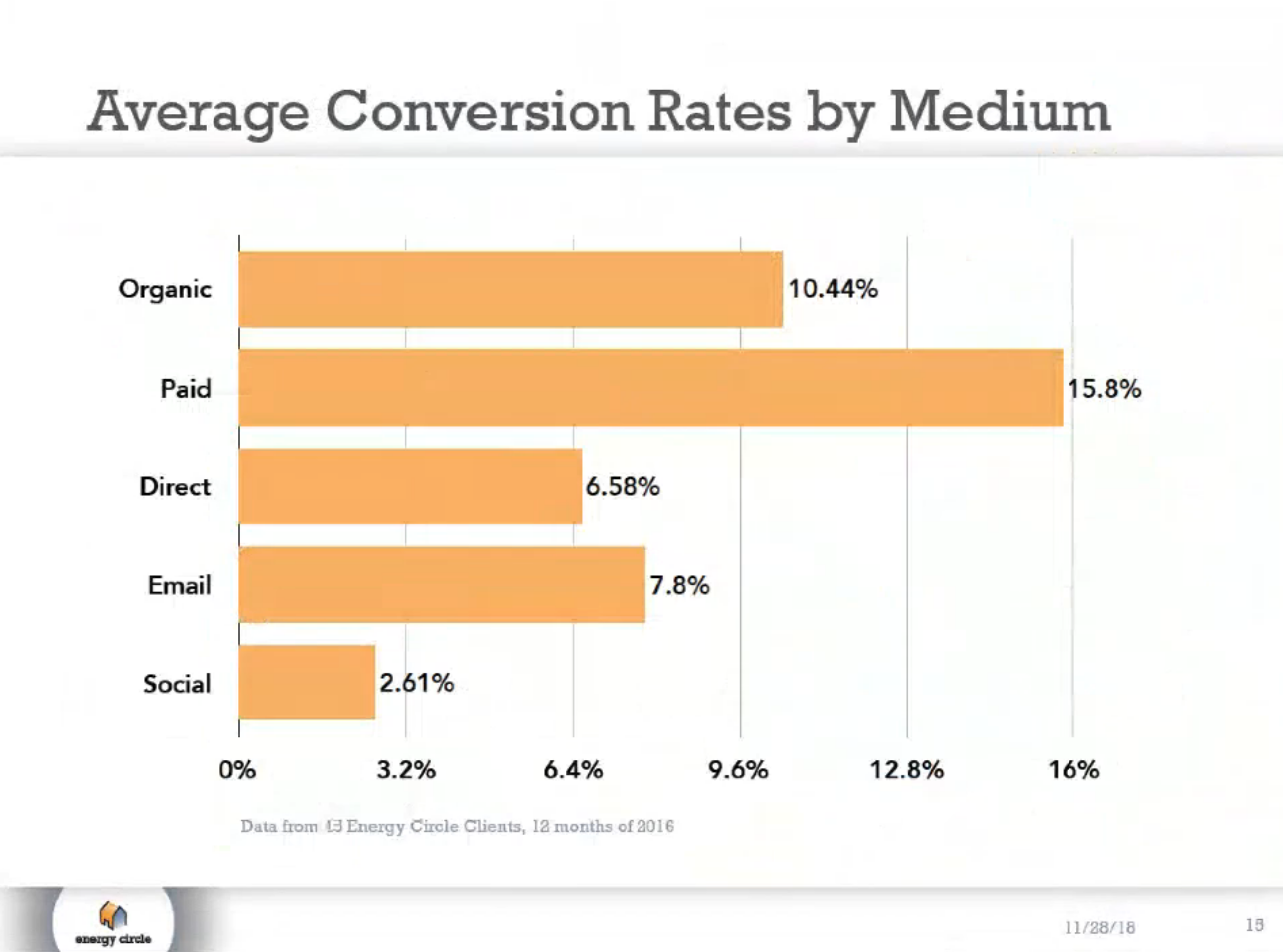
Conversion rates
Different traffic will convert at different rates. Traffic types take different skillsets to grow, so you want to focus first on traffic that is the easiest to capture and converts at the highest rate for your business. While we use 10% as an average for ALL traffic sources, see the above illustration for the average conversion rates (by source) from 43 Energy Circle websites.
How to determine sufficient traffic for your site
First, let’s start with these four questions:
- What is your (monthly, quarterly or annual) sales goal? (dollar amount)
- How many leads do you need?
- How many leads do you need by source?
- How many leads do you need from your website?
Now, let’s apply these questions to a specific example: Let’s say your revenue goal is $10 million. With an average ticket of $25,000, you will need 400 sales in the year to achieve that $10 million. That is your sales goal (question 1).
Next, let’s assume your close rate (from top of the funnel to closed sale) is 20%. This means you will need 2,000 leads to achieve your goal of 400 sales. (Note: A close rate of 20% is the average of all sources since each source will close at a different rate.)
Since you need 2,000 leads and 400 sales, the question then is: what are the sources for these leads? To figure this out, let’s break down the expected sales by source, and let’s assume the following common breakdown. (Note: This breakdown will differ by business, but you can use it as a starting point or look to past years to get the data.)
- Referrals: 150 sales
- Events: 50 sales
- Purchased: 50 sales
- Website: 150 sales
In this example, we see that 150 sales are needed from our website (question 3). A best-in-class website converts traffic leads at 10%, meaning we need 1,500 website leads to achieve our goal (question 4).
On average, you’ll need to spend $100 to $200 per month to get leads from sources like paid search. The amount will depend, of course, on your previous investment, as well as your current digital presence. The longer you’ve had a presence on the web, the lower that amount is. If your business is brand new, the higher that amount will be.
So how much traffic do you need for your website? If you’re website converts at 10% (a good industry benchmark), then you will need 15,000 visitors to get 1,500 leads. If you don’t know what your website conversion rate is, that’s something you’ll need to start tracking. If you know your website is underperforming at, say, a 5% conversion rate, then you know you need to focus your energy to get it up to 10% if you’re going to achieve your sales goal.
If you have no traffic…
If you are starting out with no traffic, the critical factors to focus on will be organic and paid traffic. In our experience, focusing on social, referral, direct, or email traffic, are not the correct sources to start with.
Here’s a snapshot of what to look for with organic search. Audit your web presence and determine what you’re missing. There are eight critical factors that influence your business’ organic search ranking. Start by optimizing these factors and you’ll build a solid foundation for organic traffic.
- Proximity
- Website
- Links
- Google My Business
- Reviews
- Engagement
- Metadata
- Citations
Note: Both local pack and organic results are considered SEO.
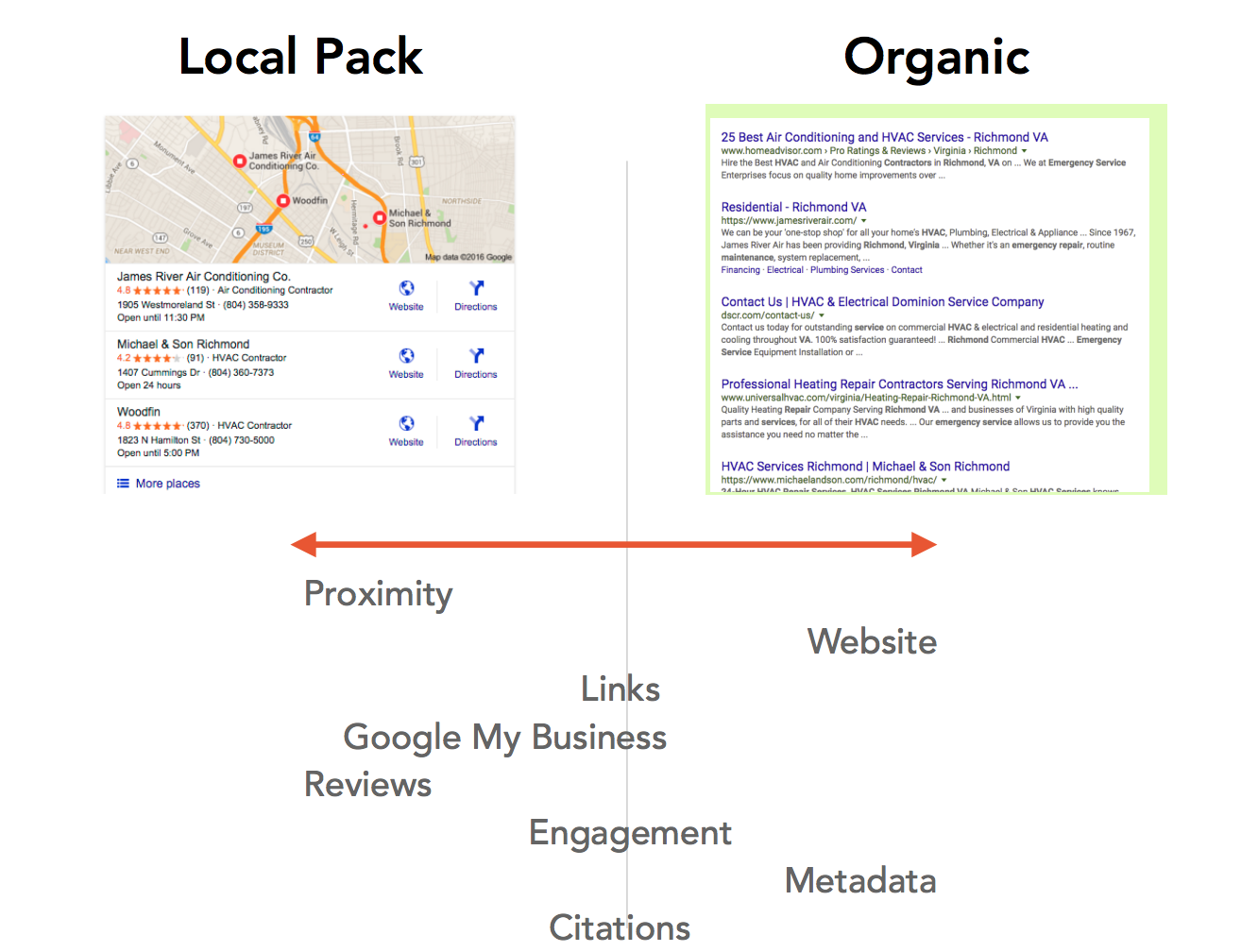
If you have a substantial amount of traffic….
In this case, you need to determine where your traffic is coming from and at what rate that traffic is converting. This data is most commonly gathered from Google Analytics. While substantial traffic for a $2MM business is different than a $15MM/year business, here’s a basic rule of thumb to start with: If your organic traffic is at least 50% of your traffic and converts at 10% then your organic traffic is considered good. Then you can move on to tackling paid traffic.
We will go deeper into this topic later in the r.e.energize Your Digital Marketing series, but here are some scenarios to start with.
Paid Traffic: Are you running paid search already or not?
Scenario A – You are not running paid search: The solution here is easy, you need to start running paid search. Energy Circle is 100% sure that paid search is effective but it needs to be correctly implemented. A few points on this topic:
- Research your keywords, search these keywords and see what ads other businesses are running
- Create landing pages that include these keywords
- Include a form or method to contact your business for next steps
- Use analytics to track performance
- Lead sellers rely heavily on paid search to generate leads, which they then resell to you.
- Your competitors are doing it! Search for solar in your area and you’ll see paid search ads come up. Your competitors are doing it because it works.
Need help with any of these above points? Please reach out to Energy Circle or visit the r.e.energize Your Digital Marketing LinkedIn group and our moderated group can help get you answers.
Scenario B – You are running paid search, but are unsure if it’s working: How do you know if it’s working? Here are the high-level questions to start with (that don’t have anything to do with paid search per se):
- How many leads are you generating?
- What is your cost-per-lead?
- What is the quality of those leads? (High-quality leads tend to convert quickly and at a high rate.)
- What is your cost per sale?
If you can’t answer any of these questions, you need to first answer all of these questions before you spend any more money. If any of these answers are not what you need them to be, you need to go back to the drawing board to reconfigure your campaigns.
Key insight. If your current paid search campaigns are not working you should start again from scratch, asking yourself the following questions:
If your paid search is not performing optimally, answer these questions:
- Are you targeting the correct keywords?
- Are you using negative keywords?
- Do your ads have a high-quality score? This often means the keyword you’re targeting, the ad, and the landing page are all very related.
- Is your text link ad relevant to the search?
- Are you using ad extensions to take up as much space as possible?
- Is the landing page converting well?
- Are you using a bidding strategy based on device, demographics, new vs returning visitors?
Benefits (and a “watch out for”) of paid and organic traffic
Ideally, you should develop both paid and organic at the same time. Paid and organic have a symbiotic relationship and if you only focus on one or the other you are leaving traffic and leads on the table.
Paid
- Quickly generate leads. Paid search can be turned on quickly and it will reliably generate leads, as long as it’s done correctly.
- Gain insights. By going “paid,” you will get insights into what keywords are profitable. You can then target these keywords with SEO practices to rank for them organically too.
- Control lead flow. After you’ve developed a good paid search strategy, you can turn paid search off and on, based on when you need leads, or if too many leads are causing a problem.
- Develop a business asset. Having an optimized paid search account is a huge business asset because it can predictably generate leads, and it is easy to verify past performance.
- Easily track and optimize. Below is an image from the first six months of a paid search client. And this optimization doesn’t stop. After twelve months it’s common to have cost-per-lead down to around $100.
Organic
- Invest in lead annuity. Investing a small amount in organic traffic over a long period of time will bring in a continuous stream of “free leads.” The graph below illustrates what SEO looks like when done correctly.
- Create a valuable business asset. A website with a lot of content and amazing SEO, shows consistent lead generation on a monthly basis, that is a very valuable asset.
- Plan ahead. SEO cannot be shut down as you can do with paid search. Once the leads start flowing in they won’t stop. So you might need to adjust resources for the increase in leads.
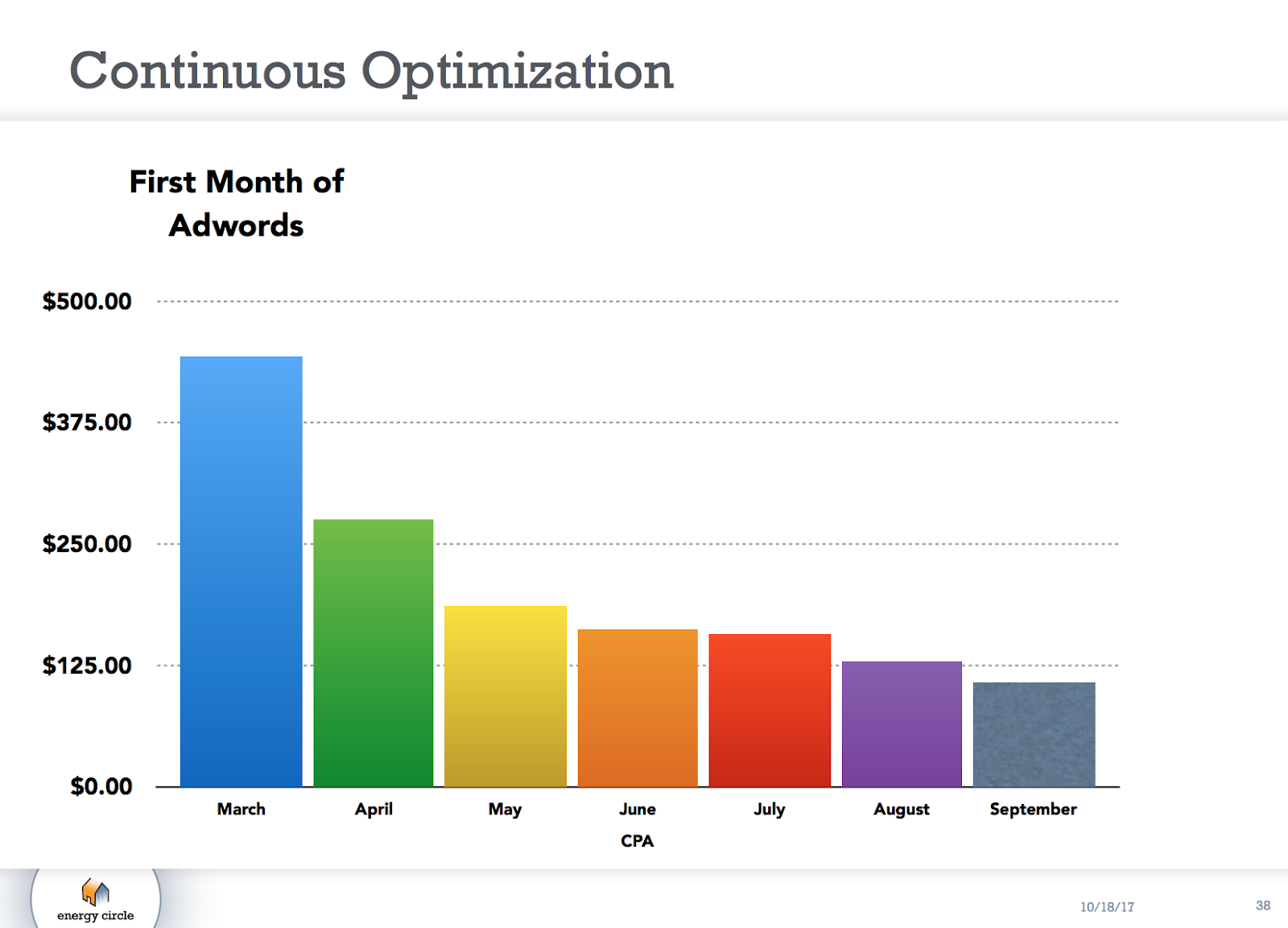
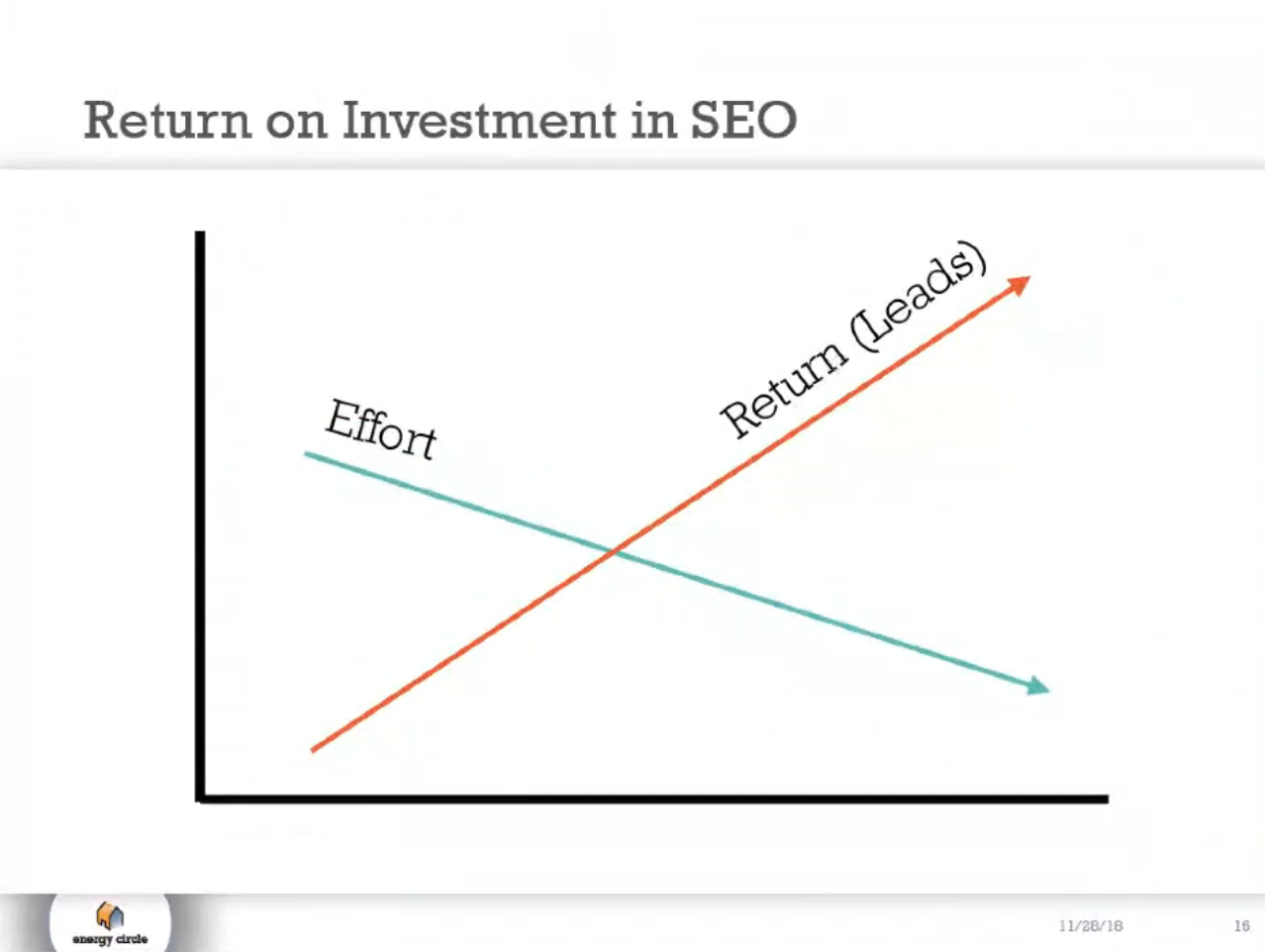
Recap and next lessons
After reading this article you should understand
- The methodology for determining how much traffic you need for your website
- The six different types of traffic
- How different traffic converts at different rates
- The pros and cons of paid search and organic
Future parts of the series.
In this article, the goal was to understand the different types of traffic and which ones your business should focus on right away. Later in this series, we’ll discuss how to actually grow those traffic sources, keys to success for each type of traffic, how to measure success, and what sort of results to expect.

